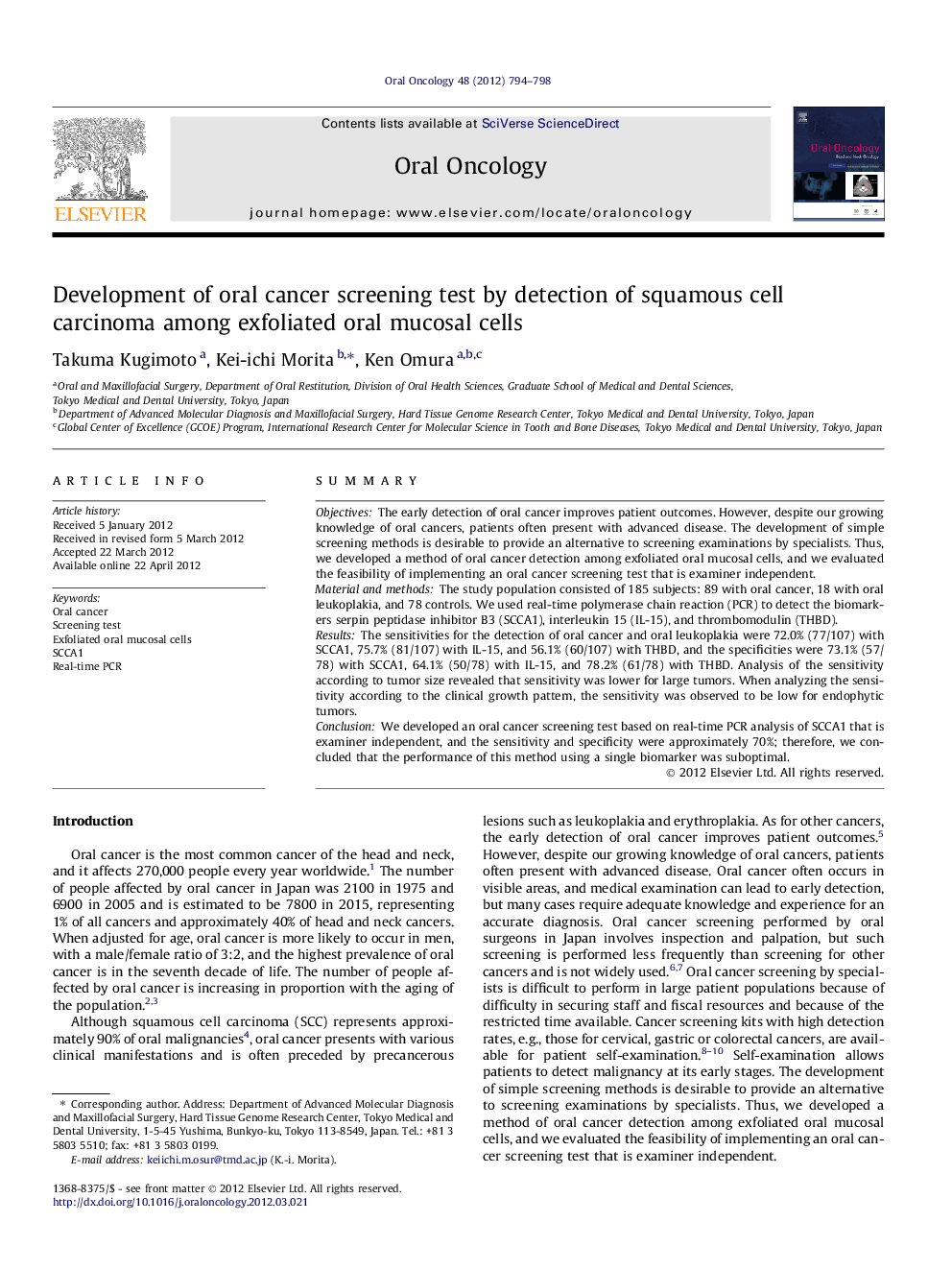| Article ID | Journal | Published Year | Pages | File Type |
|---|---|---|---|---|
| 3164100 | Oral Oncology | 2012 | 5 Pages |
SummaryObjectivesThe early detection of oral cancer improves patient outcomes. However, despite our growing knowledge of oral cancers, patients often present with advanced disease. The development of simple screening methods is desirable to provide an alternative to screening examinations by specialists. Thus, we developed a method of oral cancer detection among exfoliated oral mucosal cells, and we evaluated the feasibility of implementing an oral cancer screening test that is examiner independent.Material and methodsThe study population consisted of 185 subjects: 89 with oral cancer, 18 with oral leukoplakia, and 78 controls. We used real-time polymerase chain reaction (PCR) to detect the biomarkers serpin peptidase inhibitor B3 (SCCA1), interleukin 15 (IL-15), and thrombomodulin (THBD).ResultsThe sensitivities for the detection of oral cancer and oral leukoplakia were 72.0% (77/107) with SCCA1, 75.7% (81/107) with IL-15, and 56.1% (60/107) with THBD, and the specificities were 73.1% (57/78) with SCCA1, 64.1% (50/78) with IL-15, and 78.2% (61/78) with THBD. Analysis of the sensitivity according to tumor size revealed that sensitivity was lower for large tumors. When analyzing the sensitivity according to the clinical growth pattern, the sensitivity was observed to be low for endophytic tumors.ConclusionWe developed an oral cancer screening test based on real-time PCR analysis of SCCA1 that is examiner independent, and the sensitivity and specificity were approximately 70%; therefore, we concluded that the performance of this method using a single biomarker was suboptimal.
